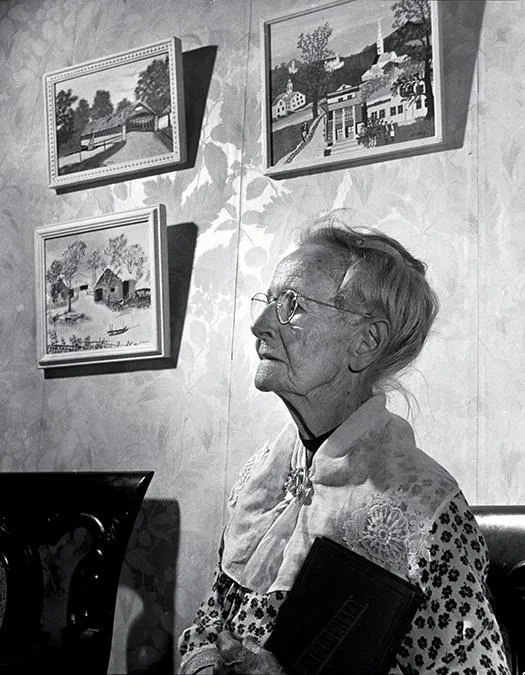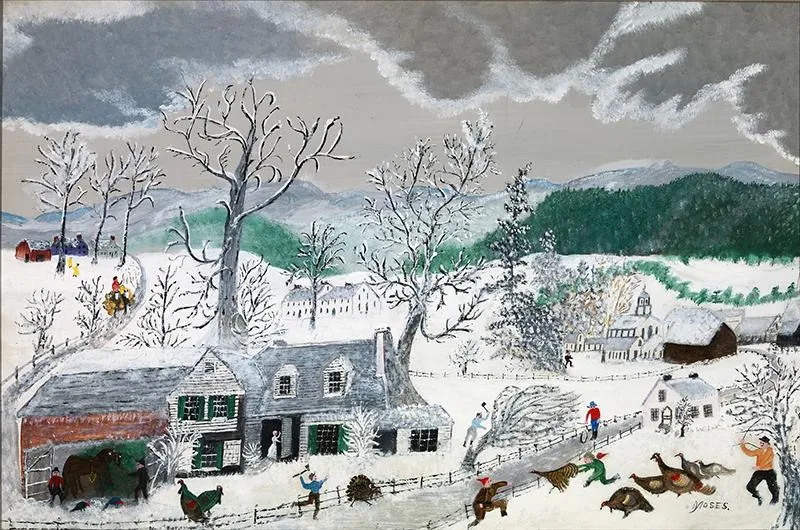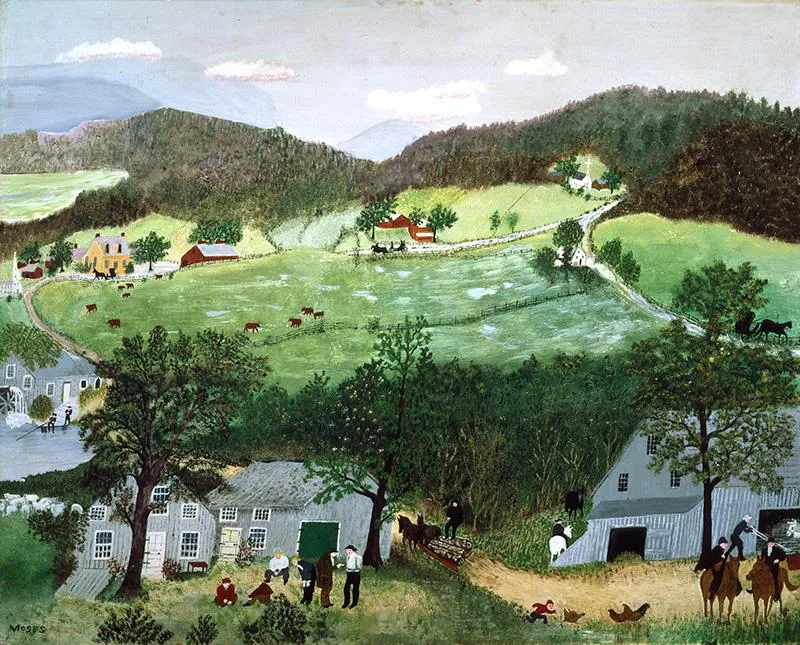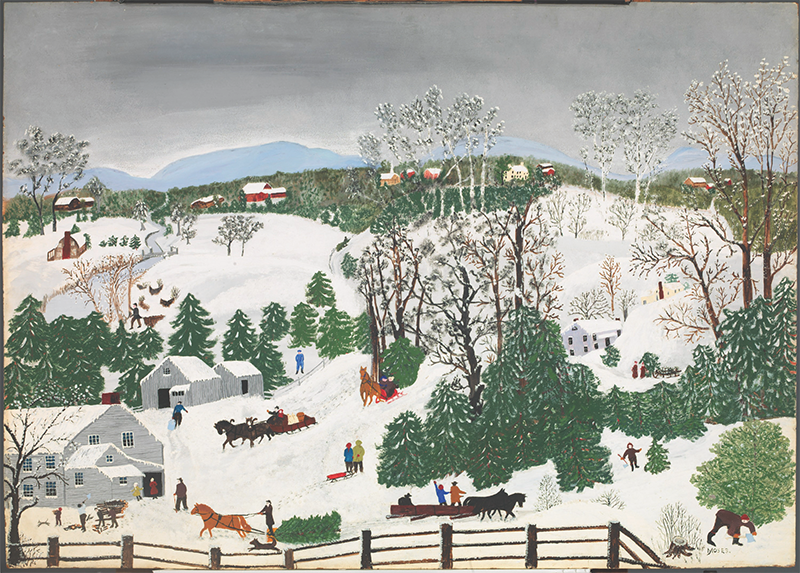How the U.S. Government Deployed Grandma Moses Overseas in the Cold War
In 1950, an exhibition of the famed artist’s paintings toured Europe in a promotional campaign of American culture
/https://tf-cmsv2-smithsonianmag-media.s3.amazonaws.com/filer/86/7e/867e0aca-a9d2-42e9-b841-636f1c930086/mar2020_b02_prologue.jpg)
For someone who didn’t get serious about painting until her 70s, Anna Mary Robertson Moses managed a singular artistic career. She made her debut in New York City’s highly competitive art scene at the age of 80 with a 1940 gallery exhibition, “What a Farmwife Painted.” Later that year she grabbed headlines when she participated in the Thanksgiving Festival at Gimbels department store in Manhattan. She looked back on that moment in Grandma Moses Goes to the Big City, a 1946 painting of the lush countryside near her home in Eagle Bridge, New York. The Smithsonian American Art Museum recently acquired the painting.

By the end of the decade, a cottage industry of greeting cards, upholstery and decorative china bearing reproductions of her idyllic country scenes had made Moses a national celebrity. In 1955, she appeared alongside Louis Armstrong in the first color episode of Edward R. Murrow’s “See It Now,” and in 1960, one year before her death, Life magazine celebrated her 100th birthday by putting her on the cover.
Yet in one of the most unexpected dimensions of her career, Moses also became an unlikely government asset in the Cold War, as I found while investigating how Moses benefited from U.S. government efforts to project a rosy vision of America throughout Europe. Between June and December of 1950, a government-backed exhibition of Moses’ picturesque American scenes toured six European cities. At the U.S. Embassy in Paris in December 1950, works like Here Comes Aunt Judith, depicting a family gathering at Christmas, were lauded by many. “It is a great pleasure to walk through such an exhibition, where the soul is devoted to the peaceful life in the quiet streets or in the warm interiors, in the midst of animals running loose or women working quietly,” one French critic wrote.

The idea that art could provide, as the late art historian Lloyd Goodrich put it, a “fallout shelter for the human spirit,” was a major motive behind the aggressive promotion of American art, music and literature across war-ravaged Europe. Propagandizing the fruits of liberal democracy in the face of Soviet communism was another objective. One Foreign Service officer who was involved with the Moses show declared that the exhibition had been as valuable as “pure gold” in promoting “the core of our national character which we are endeavoring to articulate in opposition to the efforts of the communists.” Moses’ paintings in particular fulfilled a key objective of Cold War cultural diplomacy: combating Soviet portrayals of Americans as mere capitalist dollar-chasers. The poet Archibald MacLeish, a Librarian of Congress under Franklin D. Roosevelt, wasn’t bothered by the absence of conflict, poverty or suffering in her work, arguing that art sent abroad should “subordinate to some extent the worst elements of our culture.”

As a Mayflower-descended matriarch old enough to remember hearing the news of Abraham Lincoln’s assassination, Moses had unassailable patriotic credentials. President Harry Truman was a prominent admirer: When the two met at an awards ceremony in 1949, he reportedly told the audience that he and Moses “were in complete agreement over ‘ham-and-egg art,’” his derisive term for abstract painting, then becoming increasingly favored. Truman would go on to welcome paintings by Moses into the official White House collection and, later, his own home.
Her fame was so wide-ranging that—ironically—it eventually caused her to be written out of the history of midcentury American art. This erasure began with the American art critics of her day, who were frustrated, especially in the wake of her European tour, by her ascendancy. Clement Greenberg, an enemy of kitsch and its seduction of mass taste, preferred to celebrate figures such as Jackson Pollock, whose elimination of pictorial content in his drip paintings challenged the appetite for realism that fueled Moses’ popularity.

Today, as the art world rethinks its traditional emphasis on white male artists, Moses is being re-evaluated. She will figure prominently in an exhibition I am curating next year at Atlanta’s High Museum of Art, and her work will be showcased on an even larger scale in a solo exhibition being planned by the Smithsonian American Art Museum.
It’s a pretty safe bet that audiences will once again find solace in Moses’ verdant hills and snow-covered farmscapes. And perhaps now that she is no longer perceived as a threat to the acceptance of abstract
art, which now sits comfortably within the canon, the critics will finally come around too.
Canceled Culture
In 1947, Congress called off an International tour of American art for its alleged subversion



